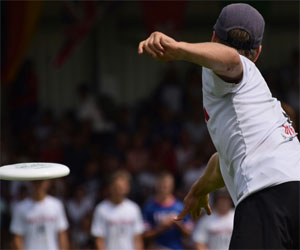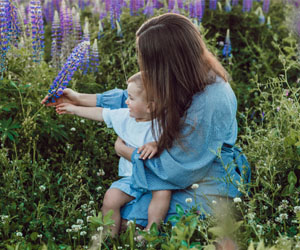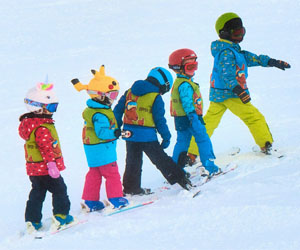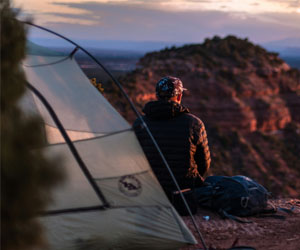


A Journey Of Innovation And Growth

The humble Frisbee, originally created as a simple plastic flying disc, has undergone a remarkable transformation over the years, evolving from a casual recreational pastime to a legitimate and highly competitive sport. The journey of Frisbee's metamorphosis into a sport is a fascinating story of innovation, dedication, and a global community that shares a passion for this flying disc. In this article, we'll explore the key milestones and factors that have contributed to this transformation.
The Frisbee's origins can be traced back to the 1950s, when American inventor Fred Morrison and Warren Franscioni developed the first plastic flying disc. Initially, it was just a toy, popular for tossing around in backyards and parks. However, the transformation from a casual plaything to a sport began in the 1960s, driven by a group of students at Columbia High School in Maplewood, New Jersey.
In 1968, these students, led by Joel Silver, introduced a new game that involved using a Frisbee to score goals. They called it "Ultimate Frisbee," laying the foundation for what would become one of the most iconic and widely recognized flying disc sports. Ultimate Frisbee's self-officiation, competitive structure, and strong emphasis on sportsmanship set it apart from casual Frisbee tossing and contributed to its growth as a legitimate sport.
The formation of governing bodies played a crucial role in the transformation of Frisbee into a sport. In 1979, the Ultimate Players Association (now USA Ultimate) was established to provide structure and consistency to the growing Ultimate community. Standardized rules and competitive leagues began to emerge, setting the stage for the development of a sport with a global presence.
Ultimate Frisbee's transformation was not limited to the United States. The sport spread internationally, with various countries adopting the game and forming their own national associations. This global reach is evident in the World Flying Disc Federation (WFDF), which oversees and promotes flying disc sports around the world.
In the realm of disc golf, which focuses on precision throws into metal baskets, the transformation from casual pastime to a sport was similarly significant. The establishment of professional disc golf tours and the Professional Disc Golf Association (PDGA) has elevated the sport to a level where top athletes can compete on a global stage.
The transformation of Frisbee into a sport was not solely about rules and organizations; it was also fueled by a dedicated and passionate community of players, enthusiasts, and volunteers. The sport's grassroots growth and the commitment of those who championed its development were instrumental in pushing it to new heights.
Today, Ultimate Frisbee and disc golf are thriving sports with competitive leagues, international championships, and a growing fan base. These sports have demonstrated that with the right infrastructure, rules, and community support, even a simple toy can evolve into a serious and respected athletic endeavor.
The transformation of Frisbee into a sport is a testament to human innovation and the power of community. From casual recreation to global competitions, Frisbee's journey has been one of dedication, passion, and an unwavering belief in the potential of this flying disc. The sport's evolution serves as an inspiring example of how a simple idea can take flight and reach remarkable heights.
Nurturing Nature While Exploring
 Sustainable Gear And Practices: Eco-conscious adventurers understand that the gear they choose can have a significant environmental impact. They opt for eco-friendly and sustainable equipment, such as recyclable and biodegradable materials. Additionally, they practice responsible resource management by conserving water, reducing energy consumption, and minimizing waste generation during their journeys.
Sustainable Gear And Practices: Eco-conscious adventurers understand that the gear they choose can have a significant environmental impact. They opt for eco-friendly and sustainable equipment, such as recyclable and biodegradable materials. Additionally, they practice responsible resource management by conserving water, reducing energy consumption, and minimizing waste generation during their journeys.
Low-Impact Camping: Camping is an integral part of wilderness journeys, and eco-conscious adventurers are known for their low-impact camping practices. This involves setting up camp in designated areas, using portable stoves for cooking instead of open fires, and following the "Leave No Trace" camping guidelines to ensure that the natural surroundings remain unspoiled.
Wildlife Observation And Conservation: Eco-conscious wilderness journeys often involve opportunities for wildlife observation. Rather than disrupting the animals they encounter, eco-conscious adventurers approach wildlife with respect and care. They maintain a safe distance and use binoculars or telephoto lenses to avoid causing distress to the animals.


A Journey Of Progress In Skiing And Snowboarding
 The Beginner Stage:
The Beginner Stage:
As a novice, the journey begins with a focus on mastering the fundamental skills. For both skiing and snowboarding, this includes:
1. Equipment Familiarization: You'll become acquainted with your gear, which includes skis, boots, and poles for skiing, or a snowboard and boots for snowboarding. Proper equipment is crucial for safety and performance.
2. Balance And Stance: Finding the right balance and learning how to stand and glide on your equipment is the cornerstone of successful skiing and snowboarding. Beginners often start by practicing on gentle slopes to develop their balance.
3. Turning And Stopping: Learning how to turn and stop effectively is key to controlling your speed and navigating the slopes safely. Novices generally begin with wedge turns in skiing and heel-side edge control in snowboarding.
4. Snowplow And Basic Maneuvers: In the beginner stage, you'll use the snowplow (or "pizza" for skiers) to control your speed and make controlled descents. Snowplow turns and basic maneuvers help you navigate the slopes with confidence.
Intermediate Progression:
As you gain confidence and proficiency, you'll transition to the intermediate stage, where you can explore more challenging terrain and techniques:
1. Parallel Turns: For both skiing and snowboarding, transitioning from wedge or heel-side edge turns to parallel turns is a significant milestone. This allows for smoother and more efficient maneuvering.
2. Terrain Variety: Intermediate riders are encouraged to explore different types of terrain, such as blue (intermediate) slopes and varied snow conditions. This stage is all about building confidence and improving technique.
The Key To Longevity In Sports
 2. Proper Technique And Form: Training in the correct technique and form is crucial to preventing injuries. Athletes must learn how to execute movements and actions accurately to reduce the risk of injury.
2. Proper Technique And Form: Training in the correct technique and form is crucial to preventing injuries. Athletes must learn how to execute movements and actions accurately to reduce the risk of injury.
3. Warm-Up And Cool-Down: Effective warm-up routines prepare the body for exercise by increasing blood flow and raising body temperature. Cool-downs help the body recover and prevent muscle soreness. Both are vital components of injury prevention.
4. Nutrition And Hydration: Proper nutrition and hydration support overall health and recovery. Athletes should maintain a balanced diet to provide the necessary fuel for the body and stay well-hydrated to perform at their best.
5. Rest And Recovery: Adequate rest and recovery are critical for preventing overuse injuries. Sleep and relaxation are key to allowing the body to repair and regenerate. Overtraining can lead to fatigue and an increased risk of injury.
6. Mental Resilience: Incorporating mental health and resilience training can help athletes cope with the stress and pressure of competition.
The Foundation Of Every Great Ride
 Surfboards come in various shapes, sizes, and designs, each tailored to specific wave conditions, rider skill levels, and surfing styles. The key elements of surfboard basics include:
Surfboards come in various shapes, sizes, and designs, each tailored to specific wave conditions, rider skill levels, and surfing styles. The key elements of surfboard basics include:
Length: Longer boards are more stable and buoyant, making them suitable for beginners. Shorter boards are more maneuverable and designed for advanced riders.
Width: Wider boards provide better stability, while narrower boards are more responsive and agile.
Thickness: Thicker boards offer more buoyancy, allowing for easier paddling and wave-catching.
Tail Shape: Different tail shapes affect control and turning abilities. Common tail shapes include round, square, squash, and pin tails.
Rocker: The curve from nose to tail influences a board's maneuverability. More rocker enhances turning ability.
Fins: The number, size, and placement of fins on a board significantly affect stability, tracking, and control.
 Camping allows you to discover the beauty of nature up close and personal. You'll have the chance to witness breathtaking sunrises and sunsets, where the sky is painted in hues of gold and pink. You can explore winding forest trails that lead to hidden waterfalls, or gaze in wonder at the star-studded night sky, free from the glare of city lights. The beauty of the natural world reveals itself in the vibrant colors of wildflowers, the crystal-clear waters of mountain streams, and the towering majesty of ancient trees.
Camping allows you to discover the beauty of nature up close and personal. You'll have the chance to witness breathtaking sunrises and sunsets, where the sky is painted in hues of gold and pink. You can explore winding forest trails that lead to hidden waterfalls, or gaze in wonder at the star-studded night sky, free from the glare of city lights. The beauty of the natural world reveals itself in the vibrant colors of wildflowers, the crystal-clear waters of mountain streams, and the towering majesty of ancient trees.
Furthermore, camping offers a return to the basics of life. With limited access to modern conveniences, you'll learn to appreciate the fundamental elements that sustain us. Building a campfire, cooking a meal over an open flame, and finding shelter in a simple tent or under the open sky harken back to our most primal instincts. This connection to the essentials of survival fosters a sense of self-sufficiency and a deeper appreciation for the resources that nature provides.
Discovering the beauty of camping is also about reconnecting with friends and family. Campfires become gathering places for stories and laughter, where the bond of shared experiences is strengthened. Whether it's toasting marshmallows, playing card games, or simply enjoying each other's company, camping offers a unique setting for building and deepening relationships.